Abstract
Cetiedil has been reported to relieve painful crises in sickle cell anemia and to have antisickling properties in vitro. The drug alters neither oxygen affinity nor the solubility of deoxyhemoglobin S. Because the viscosity of the erythrocyte interior and the kinetics of gelation are dependent on the concentration of hemoglobin, we postulated that cetiedil might inhibit sickling by modifying erythrocyte sodium or potassium movements in a manner that would increase cell water content and thus dilute the cell hemoglobin. The drug has two such effects: it inhibits the specific increase in potassium permeability that follows a rise in cytoplasmic calcium concentration and it causes a rise in passive sodium movements. These effects are further evidence that cell ion and water movements may be important in the process of sickling and suggest a mechanism for the results reported with cetiedil.
Full text
PDF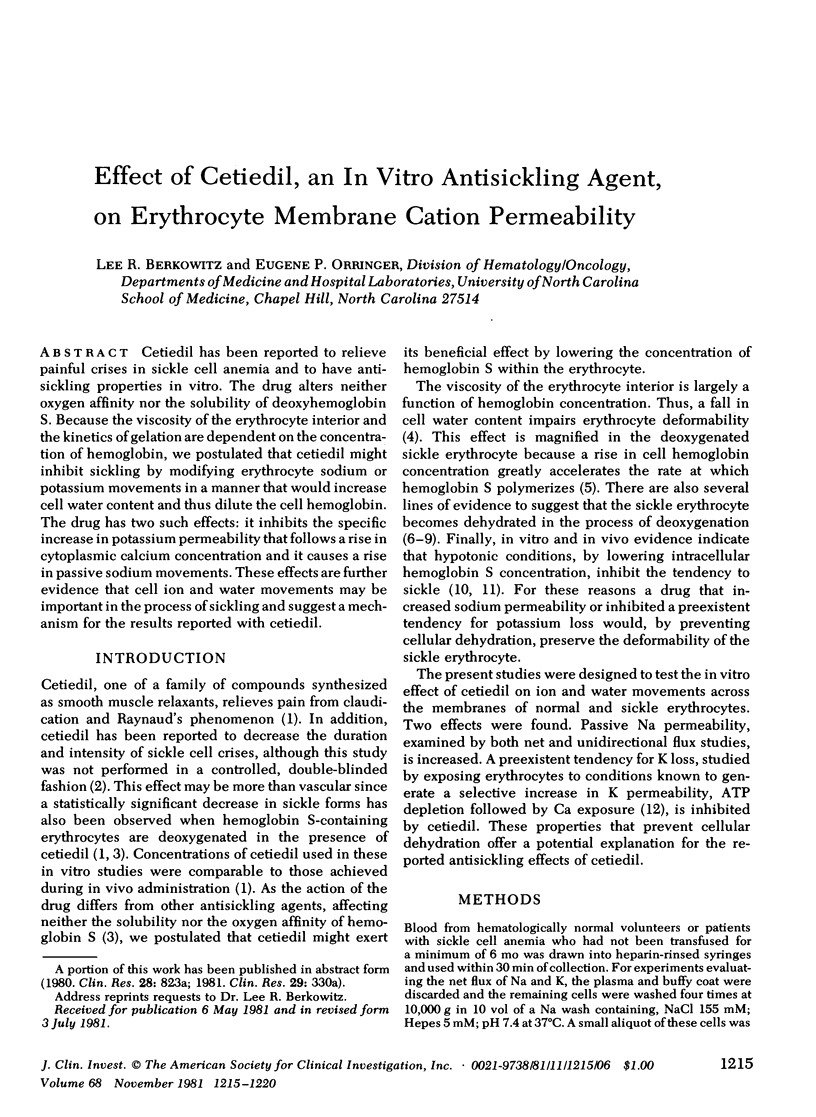
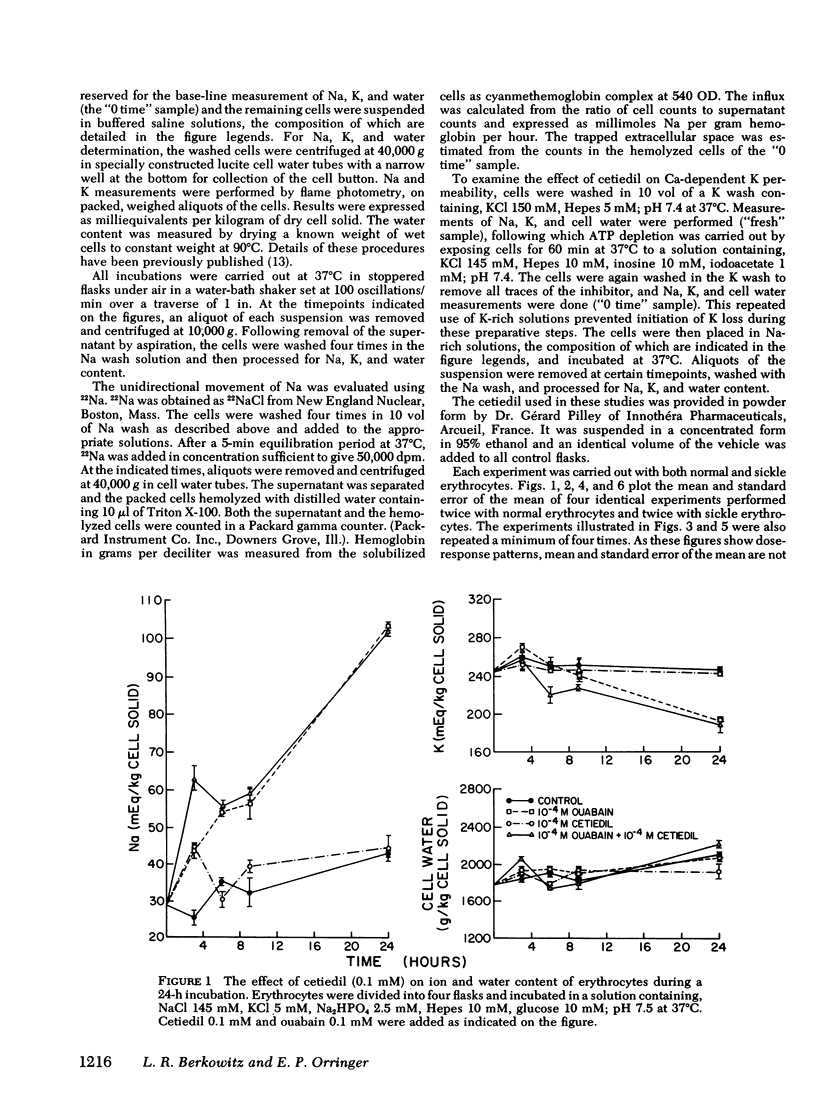
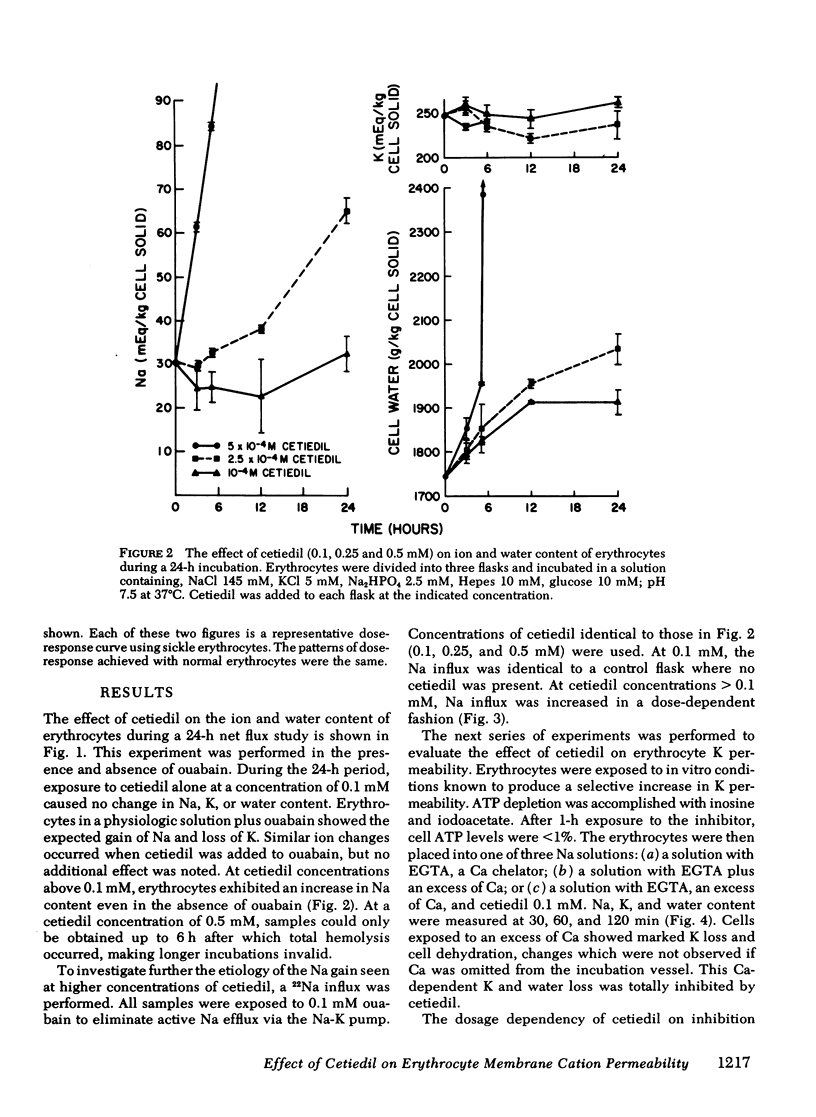
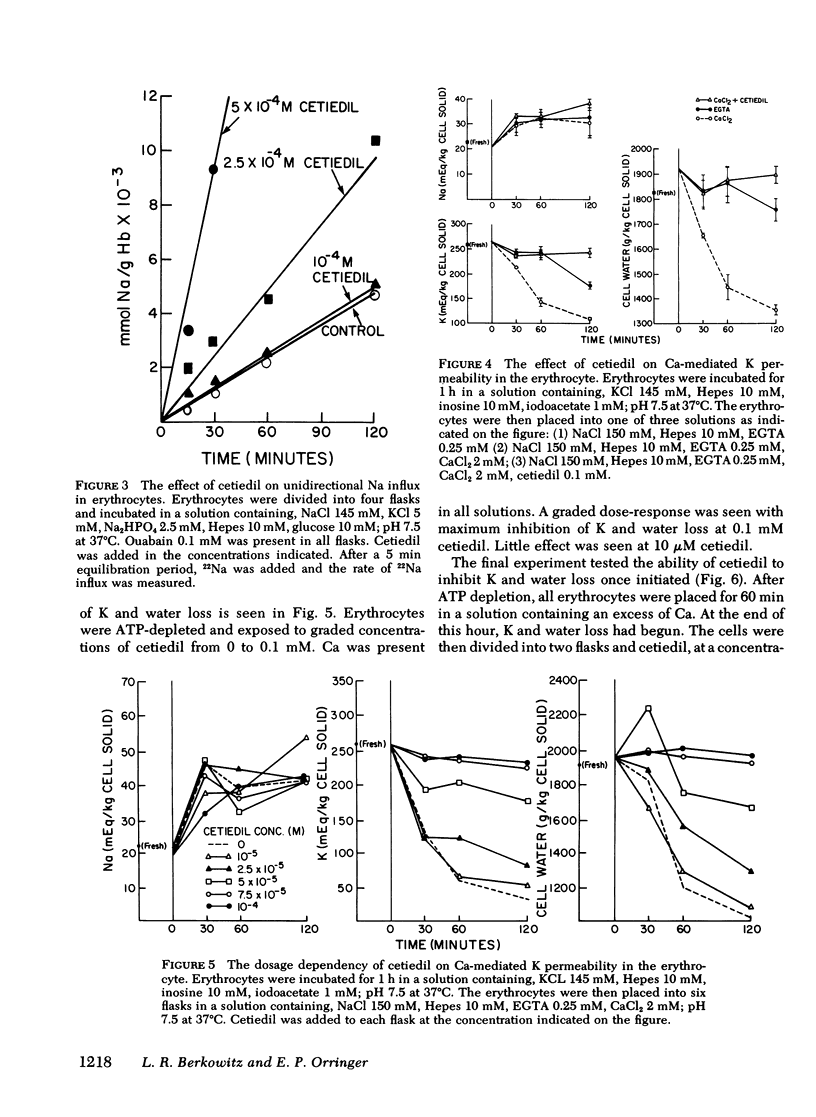
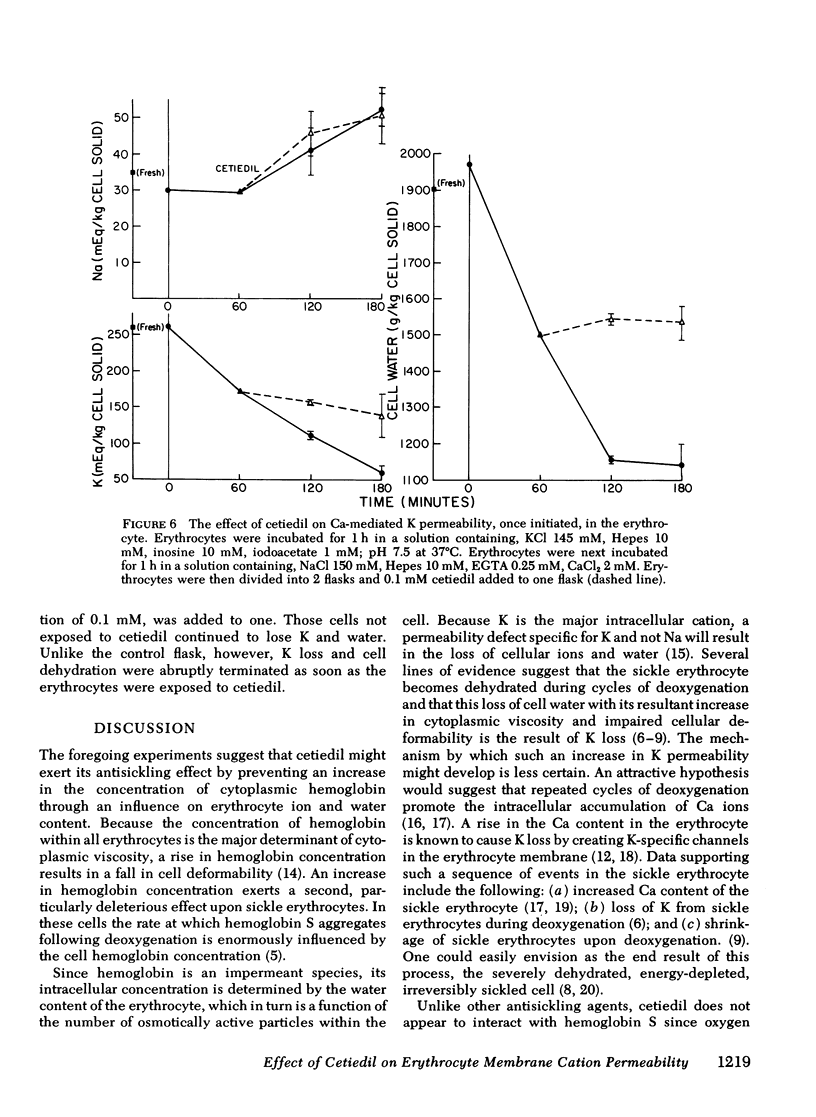
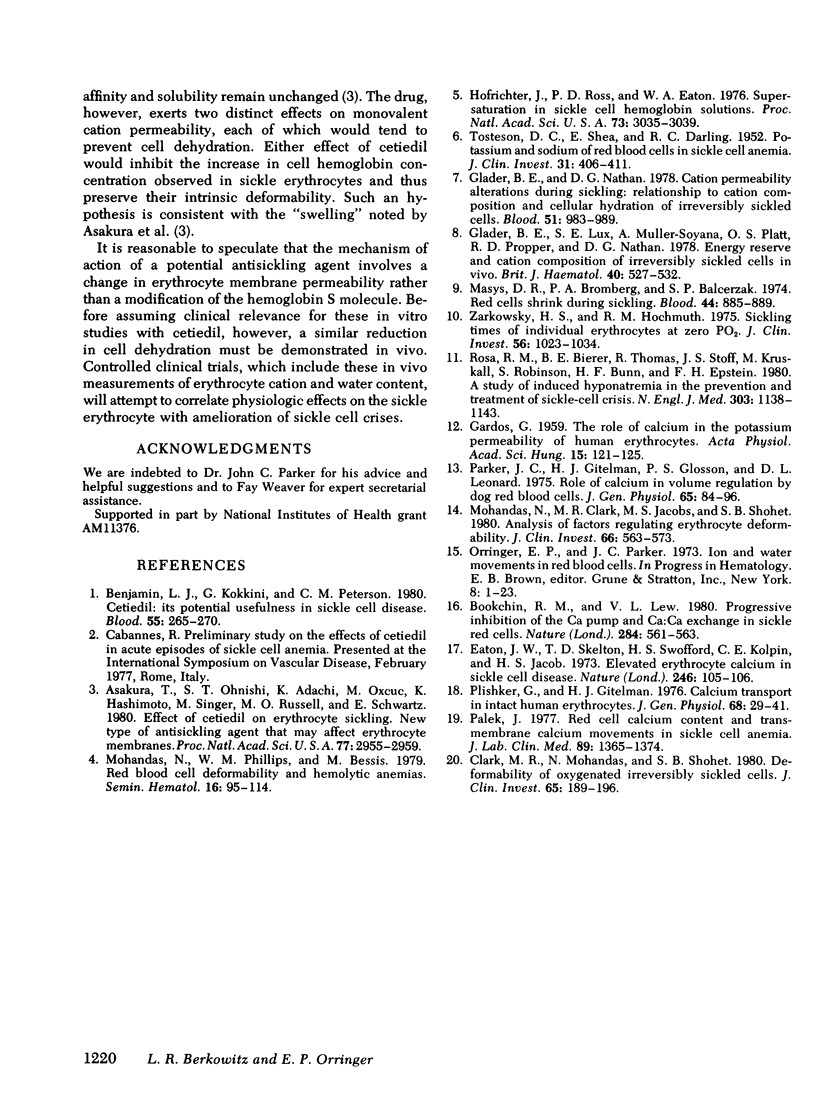
Selected References
These references are in PubMed. This may not be the complete list of references from this article.
- Asakura T., Ohnishi S. T., Adachi K., Ozguc M., Hashimoto K., Singer M., Russell M. O., Schwartz E. Effect of cetiedil on erythrocyte sickling: new type of antisickling agent that may affect erythrocyte membranes. Proc Natl Acad Sci U S A. 1980 May;77(5):2955–2959. doi: 10.1073/pnas.77.5.2955. [DOI] [PMC free article] [PubMed] [Google Scholar]
- Benjamin L. J., Kokkini G., Peterson C. M. Cetiedil: its potential usefulness in sickle cell disease. Blood. 1980 Feb;55(2):265–270. [PubMed] [Google Scholar]
- Bookchin R. M., Lew V. L. Progressive inhibition of the Ca pump and Ca:Ca exchange in sickle red cells. Nature. 1980 Apr 10;284(5756):561–563. doi: 10.1038/284561a0. [DOI] [PubMed] [Google Scholar]
- Clark M. R., Mohandas N., Shohet S. B. Deformability of oxygenated irreversibly sickled cells. J Clin Invest. 1980 Jan;65(1):189–196. doi: 10.1172/JCI109650. [DOI] [PMC free article] [PubMed] [Google Scholar]
- Eaton J. W., Skelton T. D., Swofford H. S., Kolpin C. E., Jacob H. S. Elevated erythrocyte calcium in sickle cell disease. Nature. 1973 Nov 9;246(5428):105–106. doi: 10.1038/246105a0. [DOI] [PubMed] [Google Scholar]
- GARDOS G. The role of calcium in the potassium permeability of human erythrocytes. Acta Physiol Acad Sci Hung. 1959;15(2):121–125. [PubMed] [Google Scholar]
- Glader B. E., Lux S. E., Muller-Soyano A., Platt O. S., Propper R. D., Nathan D. G. Energy reserve and cation composition of irreversibly sickled cells in vivo. Br J Haematol. 1978 Dec;40(4):527–532. doi: 10.1111/j.1365-2141.1978.tb05828.x. [DOI] [PubMed] [Google Scholar]
- Glader B. E., Nathan D. G. Cation permeability alterations during sickling: relationship to cation composition and cellular hydration of irreversibly sickled cells. Blood. 1978 May;51(5):983–989. [PubMed] [Google Scholar]
- Hofrichter J., Ross P. D., Eaton W. A. Supersaturation in sickle cell hemoglobin solutions. Proc Natl Acad Sci U S A. 1976 Sep;73(9):3035–3039. doi: 10.1073/pnas.73.9.3035. [DOI] [PMC free article] [PubMed] [Google Scholar]
- Masys D. R., Bromberg P. A., Balcerzak S. P. Red cells shrink during sickling. Blood. 1974 Dec;44(6):885–889. [PubMed] [Google Scholar]
- Mohandas N., Clark M. R., Jacobs M. S., Shohet S. B. Analysis of factors regulating erythrocyte deformability. J Clin Invest. 1980 Sep;66(3):563–573. doi: 10.1172/JCI109888. [DOI] [PMC free article] [PubMed] [Google Scholar]
- Mohandas N., Phillips W. M., Bessis M. Red blood cell deformability and hemolytic anemias. Semin Hematol. 1979 Apr;16(2):95–114. [PubMed] [Google Scholar]
- Orringer E. P., Parker J. C. Ion and water movements in red blood cells. Prog Hematol. 1973;8:1–23. [PubMed] [Google Scholar]
- Palek J., Thomae M., Ozog D. Red cell calcium content and transmembrane calcium movements in sickle cell anemia. J Lab Clin Med. 1977 Jun;89(6):1365–1374. [PubMed] [Google Scholar]
- Parker J. C., Gitelman H. J., Glosson P. S., Leonard D. L. Role of calcium in volume regulation by dog red blood cells. J Gen Physiol. 1975 Jan;65(1):84–96. doi: 10.1085/jgp.65.1.84. [DOI] [PMC free article] [PubMed] [Google Scholar]
- Plishker G., Gitelman H. J. Calcium transport in intact human erthrocytes. J Gen Physiol. 1976 Jul;68(1):29–41. doi: 10.1085/jgp.68.1.29. [DOI] [PMC free article] [PubMed] [Google Scholar]
- Rosa R. M., Bierer B. E., Thomas R., Stoff J. S., Kruskall M., Robinson S., Bunn H. F., Epstein F. H. A study of induced hyponatremia in the prevention and treatment of sickle-cell crisis. N Engl J Med. 1980 Nov 13;303(20):1138–1143. doi: 10.1056/NEJM198011133032002. [DOI] [PubMed] [Google Scholar]
- TOSTESON D. C., SHEA E., DARLING R. C. Potassium and sodium of red blood cells in sickle cell anemia. J Clin Invest. 1952 Apr;31(4):406–411. doi: 10.1172/JCI102623. [DOI] [PMC free article] [PubMed] [Google Scholar]
- Zarkowsky H. S., Hochmuth R. M. Sickling times of individual erythrocytes at zero Po2. J Clin Invest. 1975 Oct;56(4):1023–1034. doi: 10.1172/JCI108149. [DOI] [PMC free article] [PubMed] [Google Scholar]


